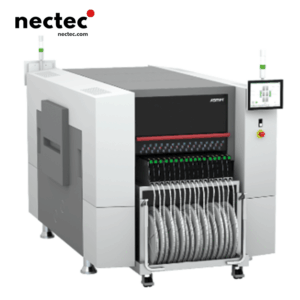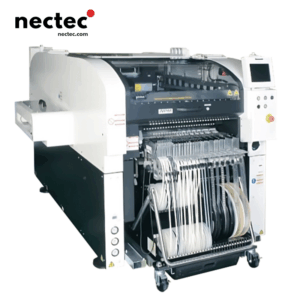In today’s fast-paced manufacturing environment, efficiency and precision are paramount. Manufacturers constantly seek to optimize their processes to reduce costs and improve productivity while maintaining high-quality standards. Enter semi-automatic pick and place machines—a technological marvel that has gained immense popularity in factories worldwide. In this article, we’ll delve into what these machines are, how they work, and their remarkable benefits to the manufacturing industry.
半自動ピック&プレースマシンとは?
A semi-automatic pick and place machine is a device designed to automate the process of picking objects from one location and placing them in another. Typically used in assembly lines, these machines help streamline workflows by reducing manual labor and increasing process speed. Unlike fully automatic systems, semi-automatic variants require some level of human intervention, making them more adaptable and cost-effective for many businesses.
半自動ピック&プレース・マシンはどのように機能するのか?
The operation of semi-automatic pick and place machines can be broken down into several key components:
- ビジョンシステム: Many semi-automatic machines are equipped with advanced vision systems that help identify the objects being handled. Cameras and sensors detect the location and orientation of items, ensuring accurate picking and placement.
- エンド・エフェクター These are the tools at the end of the robotic arm or conveyor system, designed to grip and manipulate objects. Depending on the application, end effectors can be suction cups, grippers, or magnetic pads.
- 制御インターフェース: Operators input commands via a user-friendly interface. This can range from graphical touchscreen displays to simple buttons, allowing for easy operation and customization based on specific tasks.
- コンベアシステム Semi-automatic machines often integrate conveyor systems that transport items to and from the machine. This enhances workflow efficiency, reducing bottlenecks in production lines.
Advantages of Semi-Automatic Pick and Place Machines
The integration of semi-automatic pick and place machines in manufacturing processes offers several advantages:
- 効率の向上: These machines significantly reduce the time taken to complete repetitive tasks. By minimizing manual handling, manufacturers can maximize throughput and achieve faster production cycles.
- 費用対効果: Investing in semi-automatic solutions often requires lower capital compared to fully automated systems. Moreover, lower labor costs and reduced error rates lead to significant savings in the long run.
- 柔軟性: Semi-automatic machines can adapt to varying product sizes and shapes. Manufacturers can easily reprogram the machines to accommodate different tasks, making them ideal for small to medium production runs.
- Improved Precision and Accuracy: With advanced vision and control systems, these machines minimize the risk of human error. This enhanced precision contributes to higher product quality and consistency.
Applications of Semi-Automatic Pick and Place Machines
Industries utilizing semi-automatic pick and place machines are diverse, ranging from electronics to food and beverage. Here are some notable applications:
電子機器製造
In electronics manufacturing, these machines are used to assemble circuit boards. They can quickly pick and place tiny components with high precision, thus emphasizing the need for accuracy in this sector.
食品・飲料業界
Food packaging lines commonly employ semi-automatic machines for the efficient handling of products. From picking items off production lines to packing them into boxes, these machines simplify the process and maintain hygiene standards.
自動車製造
The automotive industry benefits from semi-automatic pick and place machines in assembly processes. These systems help position parts with precision, reducing assembly time and improving efficiency in manufacturing operations.
適切な半自動ピック&プレース機の選択
Selecting the right machine for your factory is crucial. Here are some factors to consider:
- ペイロード容量: Evaluate the weight and size of the items you wish to handle. Ensure that the selected machine can accommodate your requirements.
- スピードとスループット: Assess the machine’s speed to determine if it aligns with your production goals. A proper match will significantly enhance overall efficiency.
- 使いやすさ: User-friendly interfaces reduce training time and minimize operational complexity. Look for machines that can be easily adjusted as production needs change.
- メンテナンスの必要性: Consider machines that require minimal maintenance to avoid production downtimes. Knowing the upkeep needed will ensure that your operations flow smoothly.
半自動ピック&プレース・マシンの未来
As technology continues to evolve, semi-automatic pick and place machines are likely to become even more integrated into production lines. Innovations in robotics, artificial intelligence, and machine learning are paving the way for smarter machines capable of handling more complex tasks. Enhanced connectivity—such as IoT integration—will also allow for real-time data collection, helping manufacturers monitor performance and optimize operations.
In summary, semi-automatic pick and place machines are revolutionizing the manufacturing landscape by streamlining operations, reducing costs, and improving product quality. As industries continue to evolve, these machines will play a vital role in shaping the future of manufacturing. By investing in technology today, manufacturers can ensure they remain competitive and responsive to market demands.









